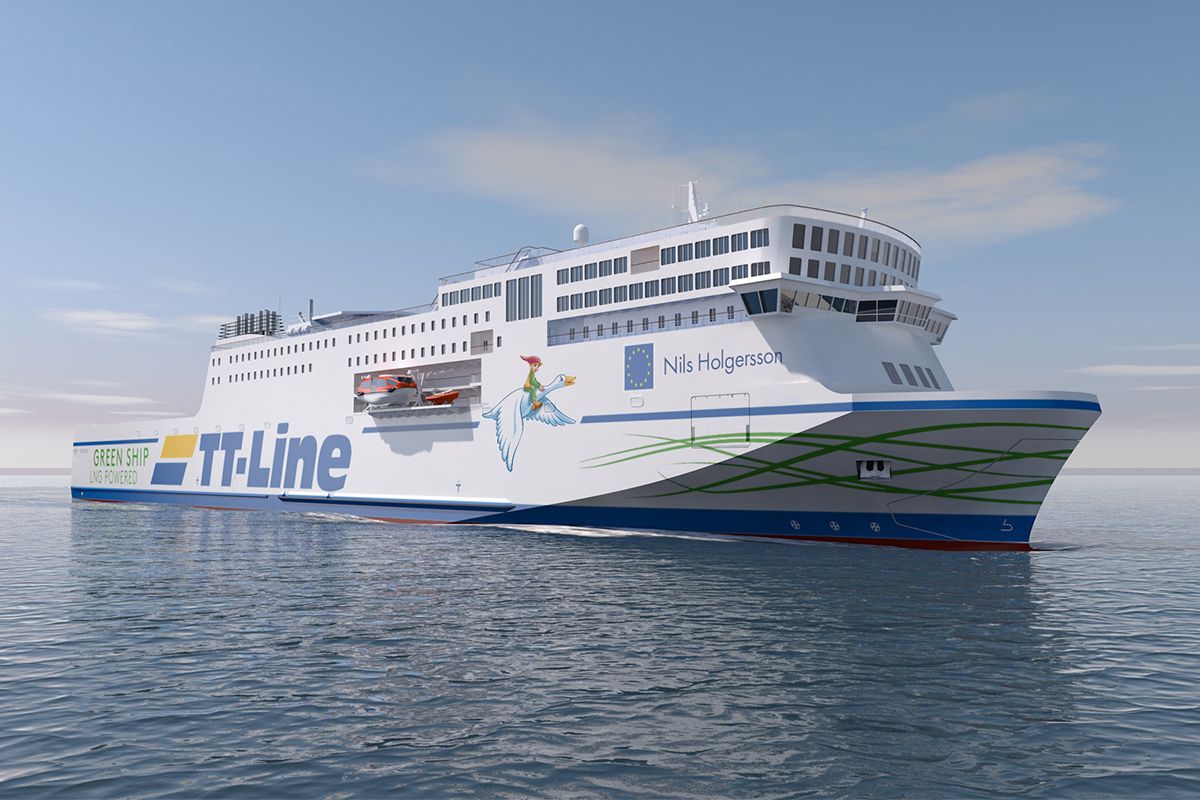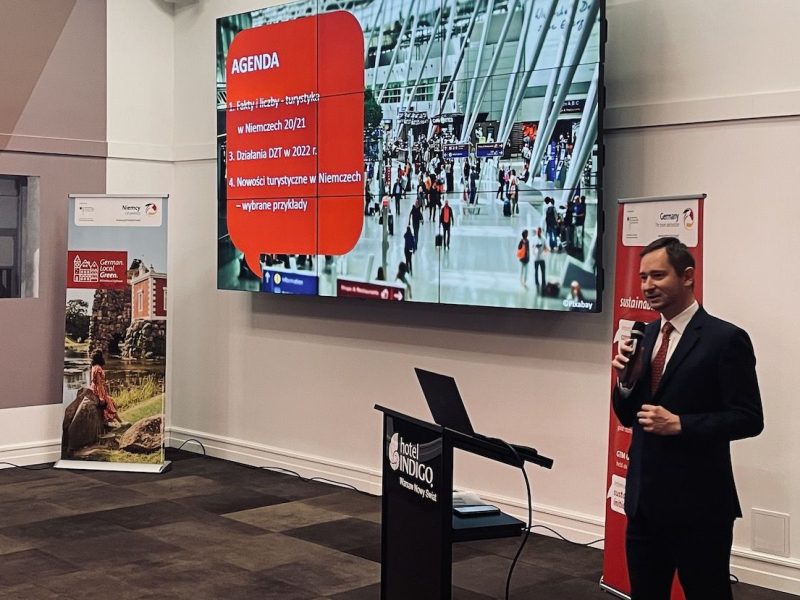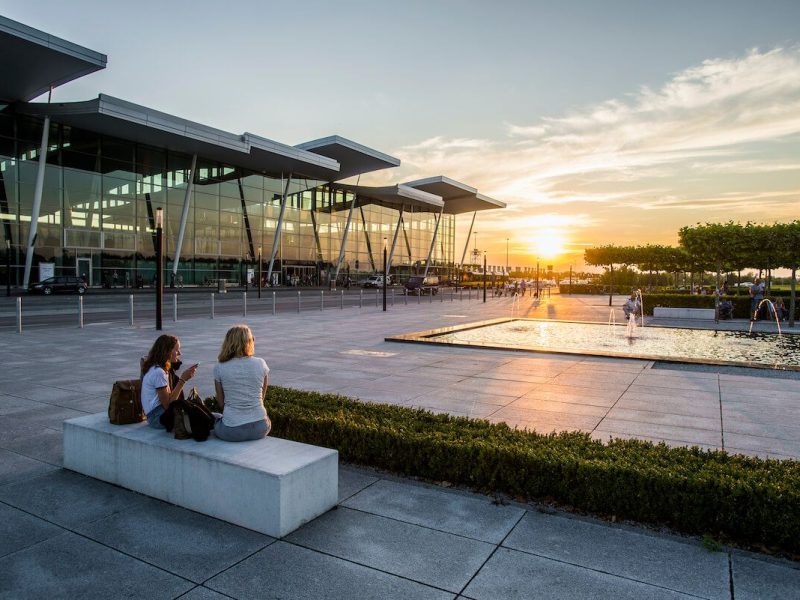Green Ship Nils Holgersson collected from the shipyard
TT-Line, which is celebrating its 60th this year. birthday, is the first shipping company in the South Baltic to fully focus on sustainability – from the marine gym to on-board catering services. Yesterday, the first of two completely new generation Green-Ships ferries was delivered to the shipowner by the shipyard. The unit offers a range of future-proof technologies.
Sustainable development is the basic topic of the future – says Aneta Wencel, Managing Director of TT-Line Polska. Environmental protection is of vital importance to the company. We want to meet these challenges and combine economics with ecology – also or above all in shipping – says Aneta Wencel.
The requirements for the new ships were high: The Nils Holgersson Green Ship is the first ferry in the South Baltic to use environmentally friendly liquefied natural gas (LNG), which is currently considered the cleanest marine fuel. Green Ships’ reduction of exhaust emissions into the atmosphere is spectacular compared to conventional ferries: the amount of particulate matter is reduced by 93%., Nitric Oxide (NOx) by 82 percent., sulfur oxides (SOx) by 98 percent. compared to traditional marine fuel. The new Green Ships will also be unique in terms of reducing CO2 emissions to the atmosphere. The combination of a much better LNG emission balance, more efficient ship operation and significantly increased cargo and passenger capacity allows to improve the CO2 balance by up to 60 percent.
In addition to environmentally friendly fuel, the ship uses many pro-ecological technical solutions, e.g. an energy-saving air-conditioning system will ensure minimum energy consumption, and the engine heat recovery system will save additional energy. Green Ship is equipped only with LED lighting, which reduces energy consumption by 80%. and ensure ten times longer lifetime of devices. The optimized hull line, including the specially designed bow, will ensure low fuel consumption while maintaining the vessel’s speed profile. Special shaft seals with additional air chambers will protect against oil leakage into the sea. A comprehensive waste management system will be used on the ship and only ecological agents and detergents will be used, and the use of plastic products will be minimized, therefore the use of environmentally friendly solutions by them is a key element in selecting suppliers. More than 90 percent of the technical solutions used in the new Green Ship were provided by European suppliers. It is worth adding that 32 electric car charging stations have been installed on the ship and even during a 6-hour cruise it will be possible to conveniently charge the cars.
The creation of a sustainable system also concerned the work and life of the crew on the ship, as well as the services offered to passengers on the ship, including sustainable food production and consumption on the ship, including the use of local products from Sweden, advance booking of meals (to avoid wasting prepared food), the use of reusable cookware and the introduction of ecological products in the on-board shop.
Nils Holgersson, under the German flag, will embark on its maiden voyage from China to Europe in just a few days. The journey will take 36 days and during this time Green Ship will travel 11,602 nautical miles at a speed of approximately 18 knots. The crew of the ferry has been on the ship for several months, where they have undergone a lot of training, got acquainted with new technologies and devices installed on the ship.
I am glad that everything starts and that I can take home our new Nils Holgersson – Captain Stephan Schipplick announced readiness for the cruise.
The maiden voyage is along the west coast of Africa towards the Suez Canal, hence measures have been taken against potential pirate attacks. A longer stay of the ship is planned in Algeciras, in the Strait of Gibraltar, for refueling, collecting additional equipment and service personnel and conducting final tests of the installed equipment. The route continues via Skagen to Travemünde in Germany, from where the ship is scheduled to start operating at the end of April.


